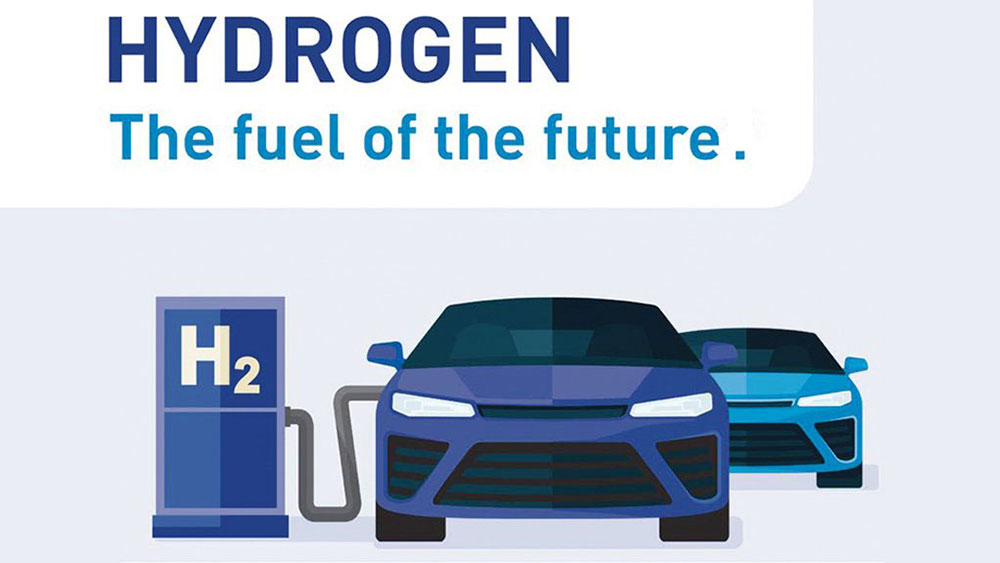FUELING THE FUTURE
WHY
HYDROGEN
The Net Zero Emissions Fuel of Today and the Future
Hydrogen
Hydrogen is the most abundant element in the universe and is the lightest of all elements and gases. In recent years, hydrogen has come to the forefront as an alternative, environmentally, friendly fuel. As an energy carrier, hydrogen provides many advantages versus other alternatives, particularly when used in a fuel cell.
Hydrogen is found in nature in combination with other elements. Natural gas (methane) and various renewable resources contain hydrogen and are the feedstocks for production of this molecule around the world.
The hydrogen spectrum
Today, however, nearly all synthetic hydrogen is produced with fossil fuels. Three main methods of sourcing hydrogen can be distinguished: grey, blue, and green hydrogen.
• Grey hydrogen is obtained by steam reforming, i.e., converting natural gas or coal under heat into H2 and CO2, with about 10t of CO2 being released into the atmosphere as GHG for each tonne of hydrogen produced. H2 sourced from methane creates about 285 grams of CO2 emissions per kWh, while coal gasification has an emission factor of around 675 grams of CO2 per kWh of hydrogen power.
• Blue hydrogen is produced in the same way, but with the addition of carbon capture and storage (CCS) to prevent the CO2 from being released. It is seen as a potential bridging technology for a transitional period until the cost of synthesizing hydrogen from renewables goes down.
• Green hydrogen is produced by electrolysis of water using only renewable, CO2-free electricity sources. While the process is already viable, the speed of its adoption will depend on the cost of electrolyzers, supply chain logistics, and regulatory policies in support of H2-based sector coupling.

Download the free whitepaper on the Hydrogen Industry.
Turning water into fuel: H2 from electrolysis
Electrolysis, or the process of splitting water (H2O) into hydrogen and oxygen using direct current, was discovered in 1800 by the English scientists William Nicholson and Anthony Carlisle, who went on to lay the groundwork for the new discipline of electrochemistry. Until the arrival of steam reforming from coal and gas, electrolysis from water was the standard method for producing hydrogen, prompting French author Jules Verne to write in his 1874 novel The Mysterious Island: “Water will be the coal of the future.” More than two centuries later, that time may finally have come, as the need to store excess renewable power and convert it into a chemical energy source has kicked off a renaissance of H2 electrolysis.
The basic principle of this technology is that two electrodes, connected to a power source, are placed in the electrolyte – in this case, water – which facilitates the charge exchange. Hydrogen will begin to form in bubbles at the cathode, and oxygen will evolve at the anode, at a rate of production that is proportional to the electric charge. This chemical reaction will yield 1 kg of hydrogen, with an energy content (HHV) of 39.4 kWh, per 9 liters of water (stoichiometric), based on a power input of 52 kWh – an efficiency rate that compares favorably to other industrial processes.
Safety and environmental impact
Notably, while hydrogen is combustible, it only burns when combined with a certain percentage of oxidizing agent, such as chlorine, pure oxygen, or O2, as well as an ignition source. Storage, handling, and transportation of hydrogen on an industrial basis have been studied and well understood for over a century; even in case of a leak, due to its natural buoyancy, the gas dissipates immediately into the atmosphere. It is not toxic, and does not emit noxious pollution, GHG, or even unpleasant odors when used with a fuel cell.
One key factor is the amount of water required for electrolysis. Especially in arid parts of the world, this must be considered both in cost calculations and in assessing sustainable resource management. However, depending on the location, some of the electricity generated by the connected renewable energy sources can be used to desalinate seawater through reverse osmosis, which requires just 3-4 kWh per cubic meter of water, at a price of about US$0.70-2.50 per cubic meter of water. This adds just one or two cents per kilogram of hydrogen to the overall production costs. While the direct use of seawater causes corrosive damage and leads to chlorine production, research is underway on how to facilitate the use of brine in electrolyzers – though this is probably still quite far off in the future.

Net Zero Emmissions


Benefits of Hydrogen as an alternative fuel
* Environmentally friendly
It's carbon free and, when used in a fuel cell, its only emission is water.
* It’s non-toxic
Unlike gasoline, hydrogen is not harmful to living things or the environment
* Energy independence
It can be produced from natural gas or renewable resources, reducing dependence on foreign oil
* Renewable
Can be produced from water and other renewable resources such as bio-methane
* Abundant
Hydrogen is the most commonly found element in the universe
* Lightest of all elements
Hydrogen gas diffuses immediately into the air and does not "pool" at the location of the leak.
Renewable Hydrogen Production Road Map For California
RENEWABLE HYDROGEN #RH2@APEP UCI ADVANCED POWER AND ENERGY PROGRAM
Click on below icon to view there research pdf.


